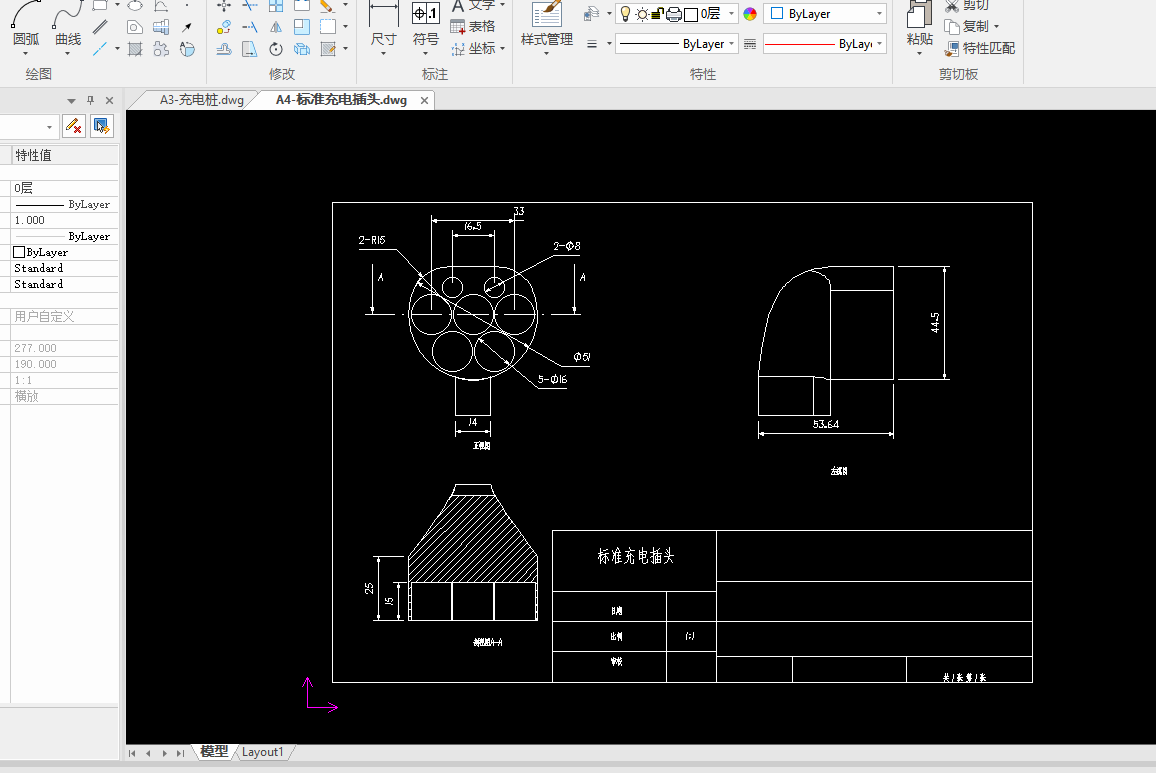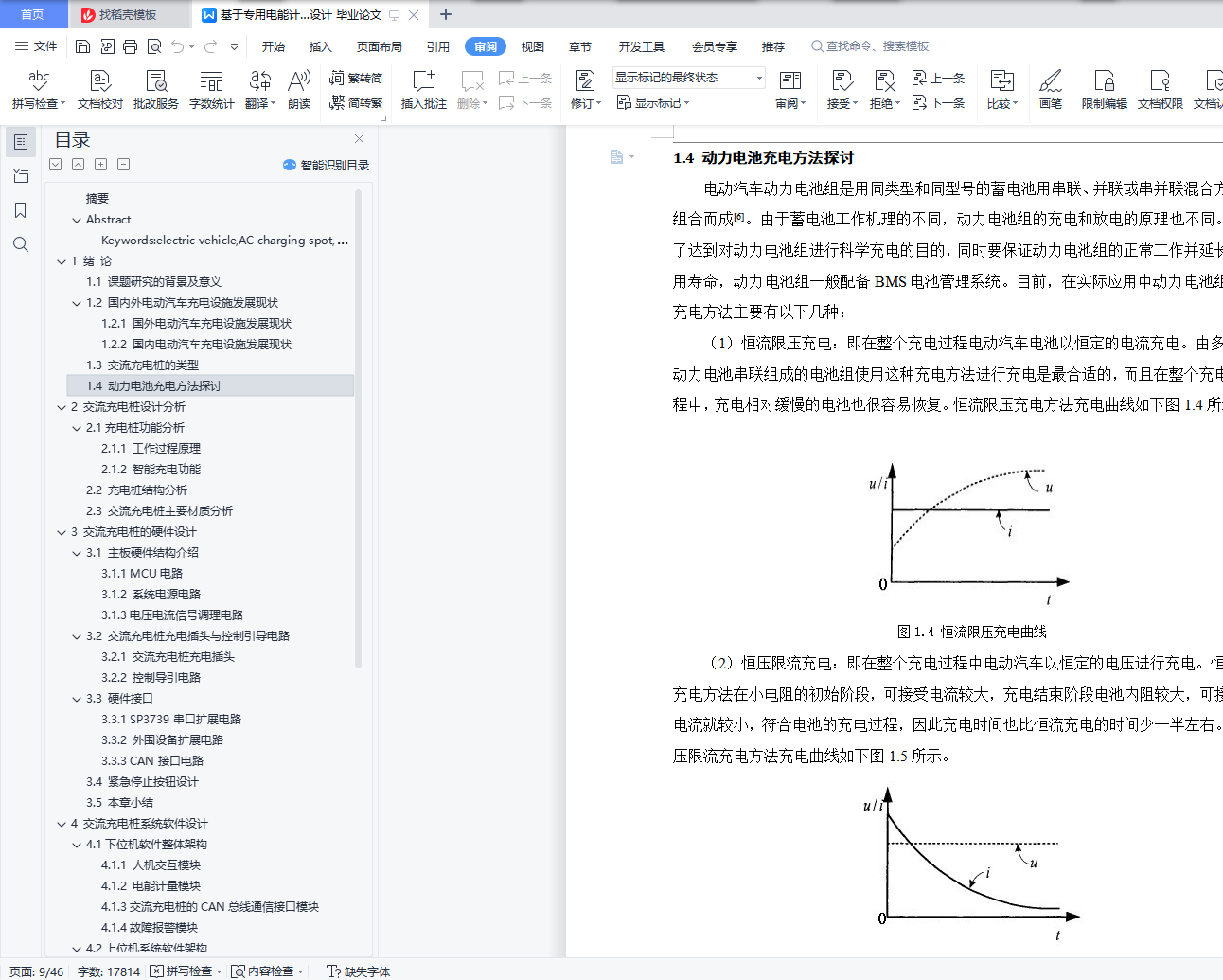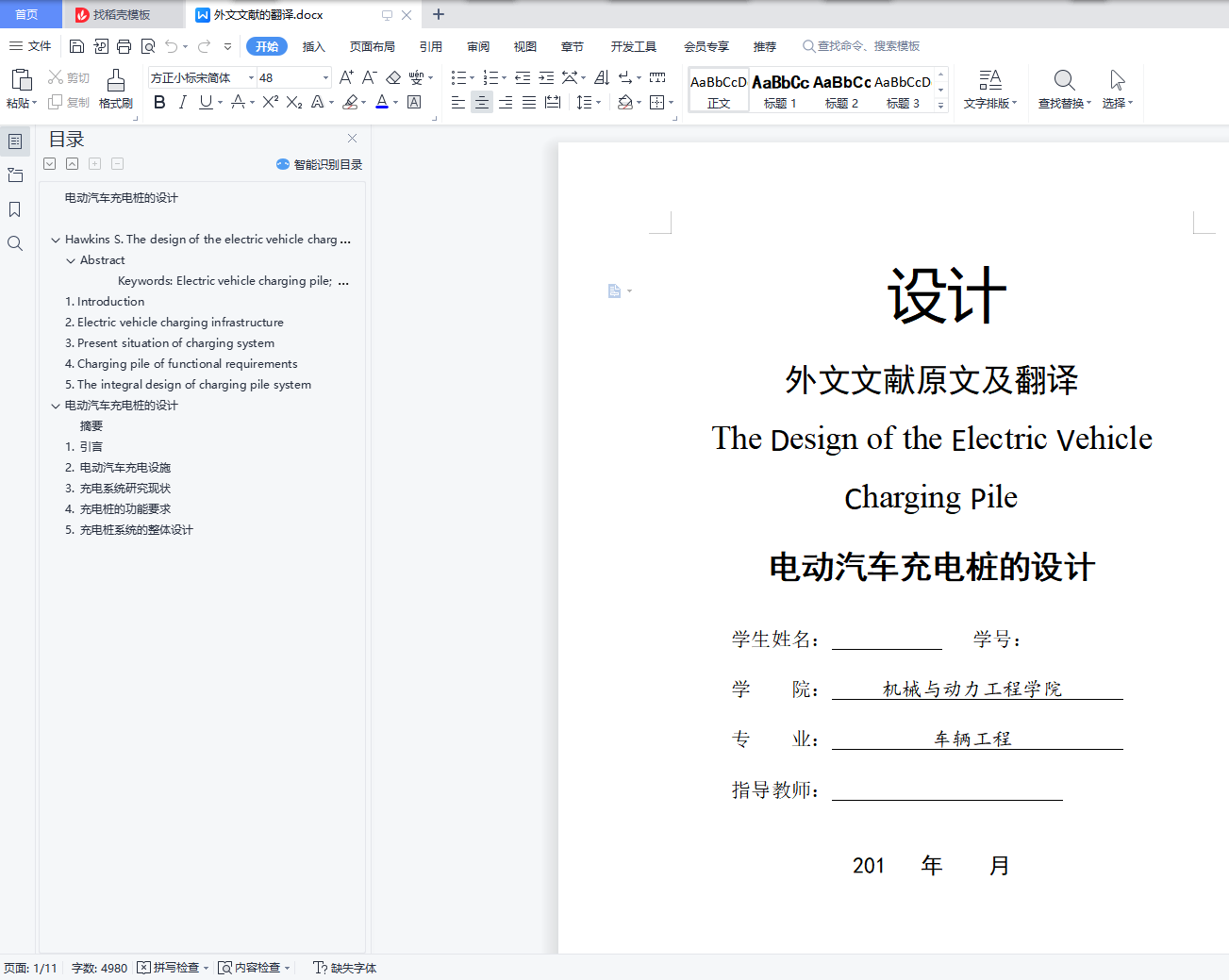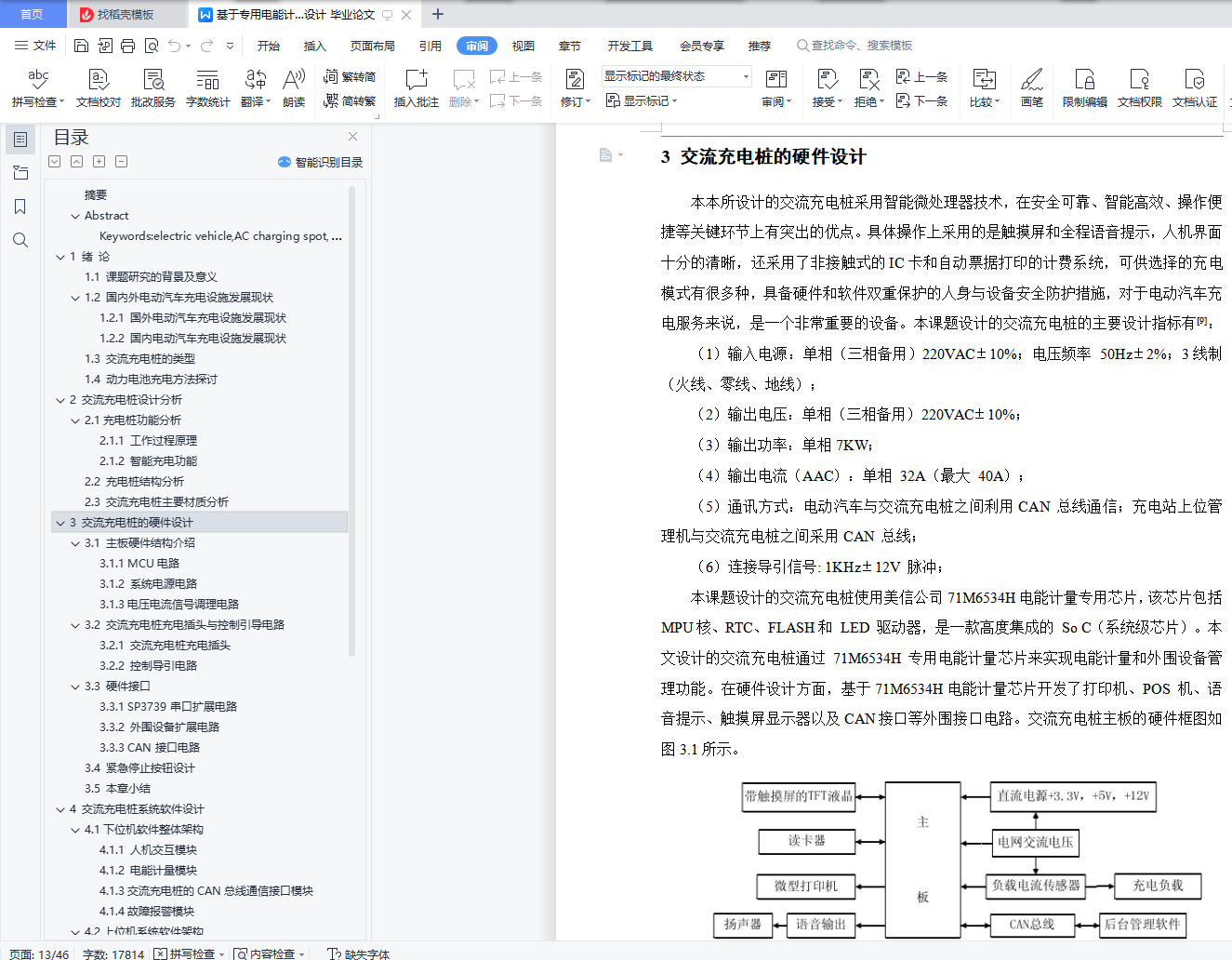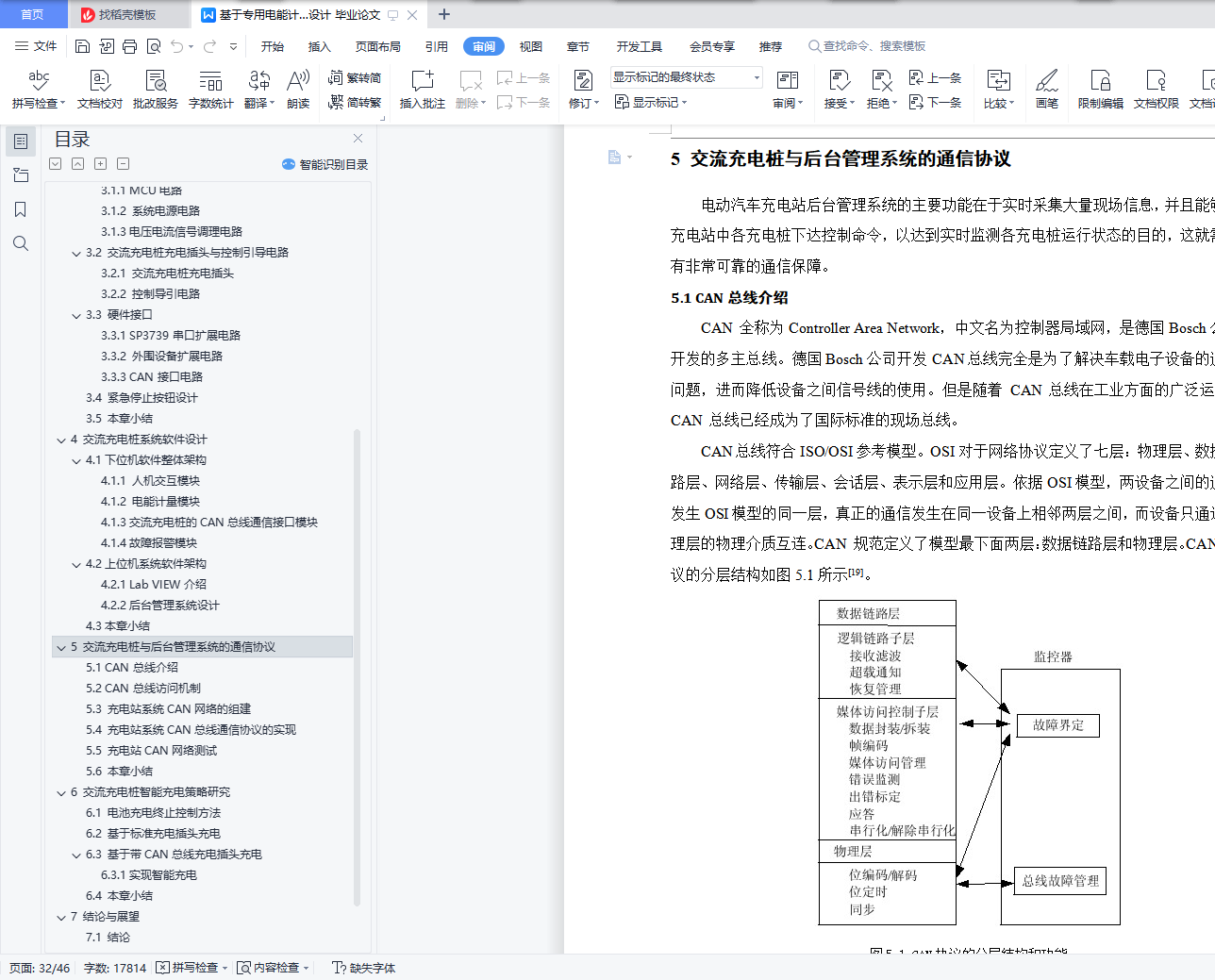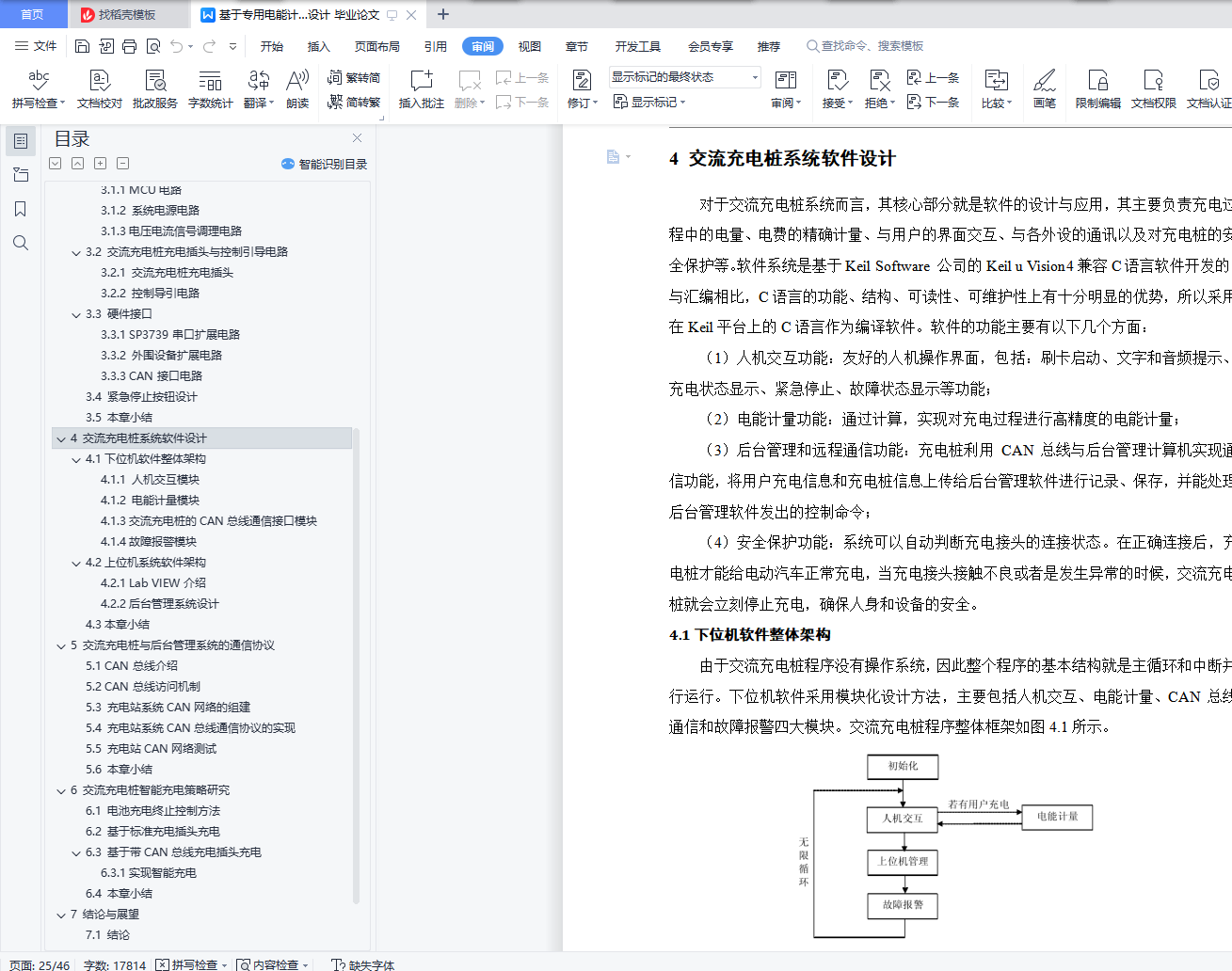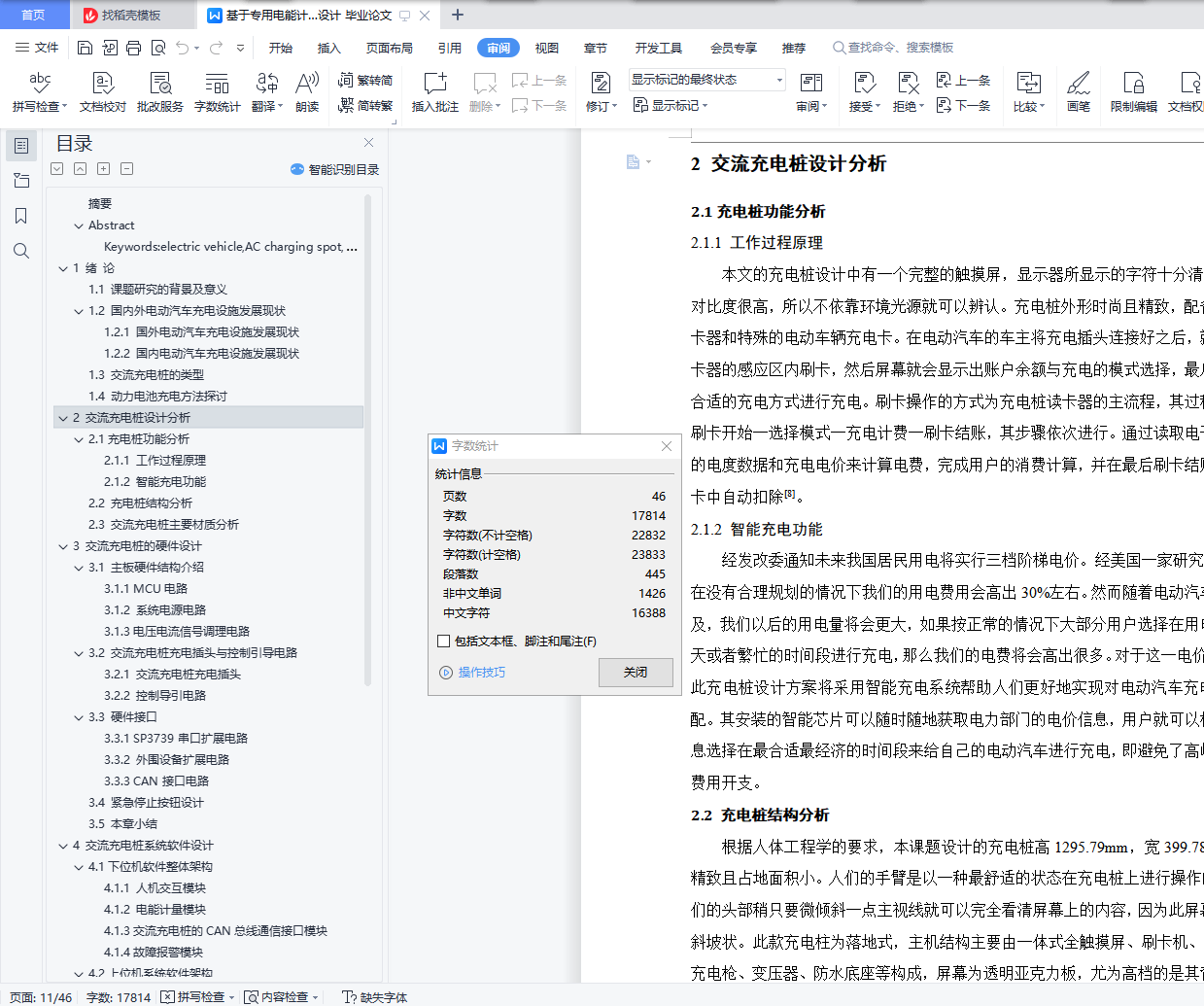基于专用电能计量芯片的纯电动汽车充电桩设计 毕业论文+任务书+开题报告+中期检查表+外文翻译及原文+CAD图纸
摘要
电动汽车充电桩是电动汽车充电设备中最常见的基础设施之一,也是电动汽车实现产业化与市场化的重要前提。本文设计的电动汽车交流充电桩是利用标准的充电接口,采用传导式充电方式为车载式充电机提供电源的装置,一般具有电能计量、计费、通信、控制等功能。电动汽车交流充电桩具有一定的安全防护等级,主要安装于停车场以及住宅小区等区域,是电动汽车进行常规充电的主要设备。
本文所研制的是一种分布式、功能模块化的交流充电桩以及车载电池管理系统,给出了交流充电桩软硬件设计方案,并在结构上实现了利用智能操作系统并采用时尚的外观造型对电动汽车充电桩进行人机友好设计,在外形上摆脱了以往呆板、庞大、笨拙等缺点。本文在硬件设计方面给出了主电路结构,包括 MCU 电路、系统电源电路、电压电流信号调理电路、用于与后台管理系统通信的 CAN总线接口电路以及外围人机交互接口电路。其中,人机交互接口电路包括打印机接口、POS 机接口、触摸屏显示器接口、语音提示接口电路。根据设计的硬件电路和专用电能计量芯片的特点,设计了交流充电桩应用软件。
交流充电桩通常以充电站的工作形式管理,这就要求与之匹配的后台管理系统对交流充电桩充电过程中的各种数据进行收发、分析、管理、存储与监控。本文设计的后台管理系统是基于Lab VIEW图形化编程语言开发的,该充电站的后台管理系统通过 CAN 总线与各充电桩进行通信。本文参考车载 BMS 电池管理系统与充电桩之间的通信协议,实现了交流充电桩与后台管理系统之间的 CAN 总线通信细节。
本文设计开发的交流充电桩功能完整、操作便捷、运行安全可靠,在充电设施建设中具有广阔的应用前景和市场潜力,对电动汽车的普及有一定的推动作用。
关键词: 电动汽车,交流充电桩,电池管理系统,Lab VIEW,CAN总线
Abstract
Electric vehicle charging spots are the most common charging infrastructures and the premise for achieving the industrialization and marketization of electric vehicles. This article deals with the electric vehicle AC charging spot is the device with standard charging interface that adopts the conduction method of charging to supply power for electric vehicles and generally has the functions of energy metering, billing, communications and control safety.AC charging spot commonly can be installed in the parking and residential area with safety protection, and is also the main equipment for the Electric vehicles in conventional charging mode.
The article introduces the design of a distributed,modularized AC charging pile and electric battery management system ,and scheme of software and hardware of AC charging spot is made,and structurally is mainly achieved by the use of intelligent operating system and simple fashion appearance on electric vehicle charging pile human friendly design, its shape from the previous machines, large, clumsy and other disadvantages of its design more scientific and technological fashion sense.In the aspect of hardware,main circuit includes MCU circuit, power circuit,voltage/current signal conditioning circuit,CAN bus interface circuit for communicating with background management system and man-machine interaction circuit.Normally man-machine interaction circuit includes POS interface, touch-screen display interface,voice prompt interface.According to the characteristics of the designed hardware circuit and the special electric energy measuring chip, the AC charging pile application software is also designed.
AC charging spot usually works in the form of charging station,so background management software is needed to match the AC charging spot.Background management software is to finish the functions of sending and receiving data,analysis,management,and storage.Background management software was developed based on Lab VIEW.Background management software communicates with AC charging spot through CAN bus. Refering to the communication protocols between electric vehicle on-board charger and AC charging spot, the communication protocols between BMS and AC charging spot is formulated.
The AC charging spot developed in this paper features with perfect functions,simple operation and stable running. So it has a broad application prospect and potential market and plays a key role in the popularity of electric vehicles.
Keywords:electric vehicle,AC charging spot,battery management system,Lab VIEW,CAN trunk
目录
Keywords:electric vehicle,AC charging spot,battery management system,Lab VIEW,CAN trunk
